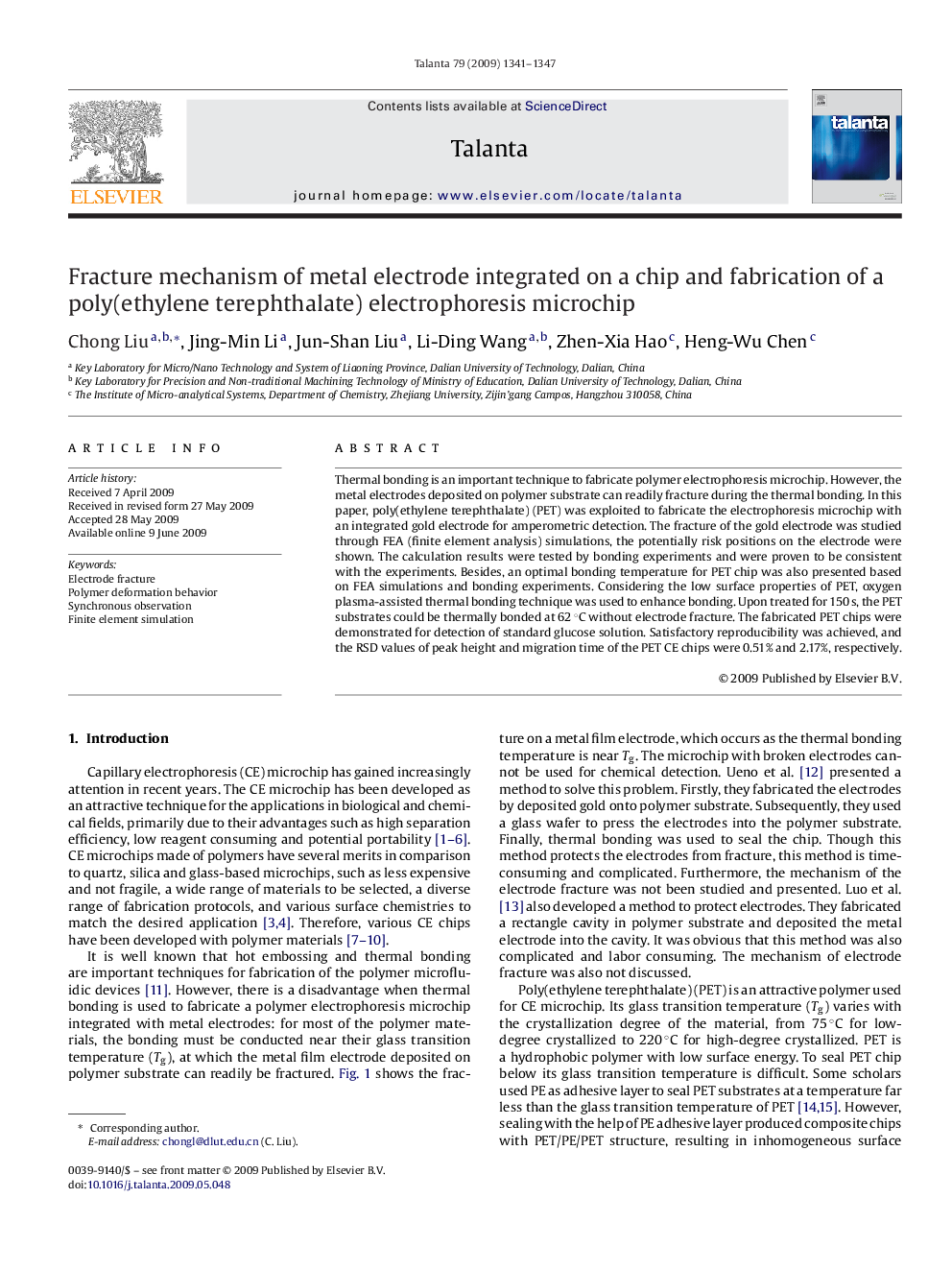| Article ID | Journal | Published Year | Pages | File Type |
|---|---|---|---|---|
| 1246831 | Talanta | 2009 | 7 Pages |
Thermal bonding is an important technique to fabricate polymer electrophoresis microchip. However, the metal electrodes deposited on polymer substrate can readily fracture during the thermal bonding. In this paper, poly(ethylene terephthalate) (PET) was exploited to fabricate the electrophoresis microchip with an integrated gold electrode for amperometric detection. The fracture of the gold electrode was studied through FEA (finite element analysis) simulations, the potentially risk positions on the electrode were shown. The calculation results were tested by bonding experiments and were proven to be consistent with the experiments. Besides, an optimal bonding temperature for PET chip was also presented based on FEA simulations and bonding experiments. Considering the low surface properties of PET, oxygen plasma-assisted thermal bonding technique was used to enhance bonding. Upon treated for 150 s, the PET substrates could be thermally bonded at 62 °C without electrode fracture. The fabricated PET chips were demonstrated for detection of standard glucose solution. Satisfactory reproducibility was achieved, and the RSD values of peak height and migration time of the PET CE chips were 0.51% and 2.17%, respectively.
